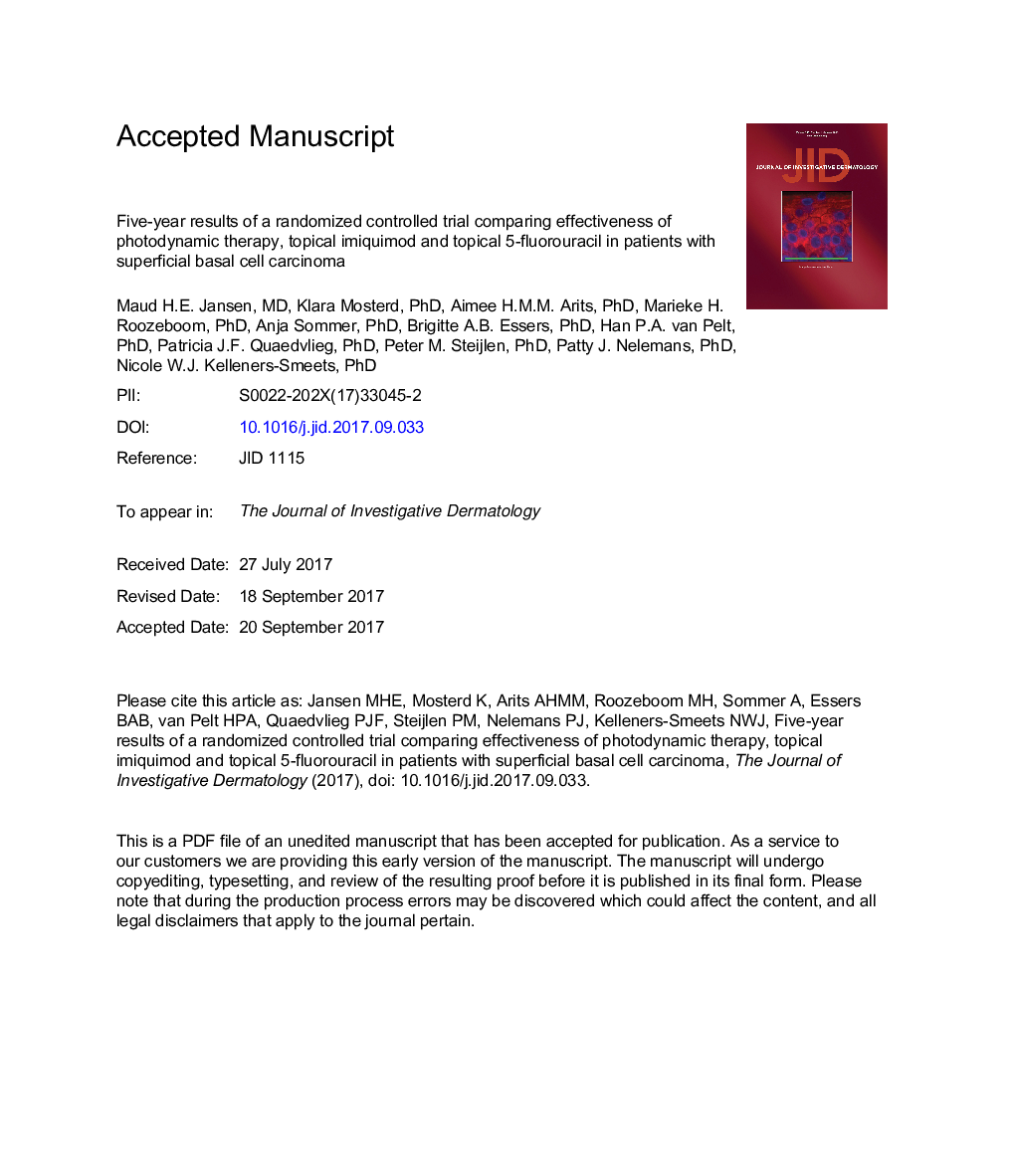| Article ID | Journal | Published Year | Pages | File Type |
|---|---|---|---|---|
| 8716098 | Journal of Investigative Dermatology | 2018 | 25 Pages |
Abstract
For the treatment of superficial basal cell carcinoma, a prospective, noninferiority, randomized controlled multicenter trial with 601 patients showed that 5% imiquimod cream was superior and 5-fluorouracil cream not inferior to methyl aminolevulinate photodynamic therapy (MAL-PDT) at 1 and 3 years after treatment. No definite conclusion could be drawn regarding the superiority of imiquimod over 5-fluorouracil. We now present the 5-year follow-up results according to the intention-to-treat analysis. Five years after treatment, the probability of tumor-free survival was 62.7% for methyl aminolevulinate photodynamic therapy (95% confidence interval [CI]Â = 55.3-69.2), 80.5% for imiquimod (95% CIÂ = 74.0-85.6), and 70.0% for 5-fluorouracil (95% CIÂ = 62.9-76.0). The hazard ratio for treatment failure of imiquimod and 5-fluorouracil were 0.48 (95% CIÂ = 0.32-0.71, P < 0.001) and 0.74 (95% CIÂ = 0.53-1.05, PÂ = 0.09), respectively, when compared with methyl aminolevulinate photodynamic therapy. Compared with 5-fluorouracil, imiquimod showed a hazard ratio of 0.65 (95% CI 0.43-0.98, PÂ = 0.04). In conclusion, 5 years after treatment, the results of this trial show that 5% imiquimod cream is superior to both methyl aminolevulinate photodynamic therapy and 5-fluorouracil cream in terms of efficacy for superficial basal cell carcinoma. We therefore consider 5% imiquimod cream as the first choice for noninvasive treatment in most primary superficial basal cell carcinomas.
Keywords
Related Topics
Health Sciences
Medicine and Dentistry
Dermatology
Authors
Maud H.E. Jansen, Klara Mosterd, Aimee H.M.M. Arits, Marieke H. Roozeboom, Anja Sommer, Brigitte A.B. Essers, Han P.A. van Pelt, Patricia J.F. Quaedvlieg, Peter M. Steijlen, Patty J. Nelemans, Nicole W.J. Kelleners-Smeets,
